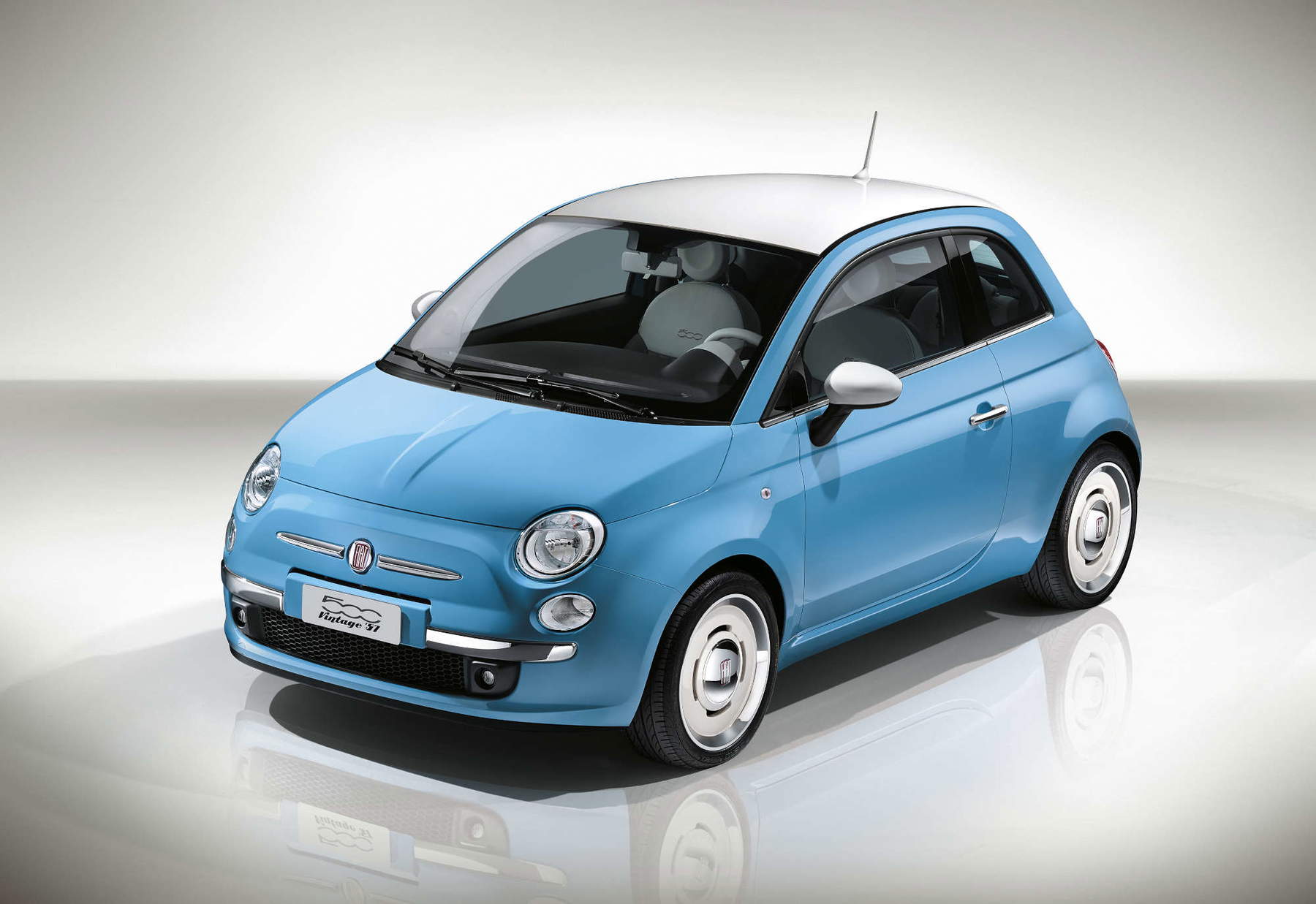Now an undisputed symbol of Italian design, the 500 boasts a long but still relevant history. Part of this history began in the 1950s, at the height of the economic boom, when Dante Giacosa (Rome, 1905 - Turin, 1996), an engineer, designer and at the time head of design for FIAT cars, was given the task of designing a “super-utility” car, economical both in terms of production cost and price on the market, that could meet the needs also, and especially, of the working class. Starting from the intuition of Hans Peter Bauhof, a young technician working in the FIAT division in Weinsberg, Germany, Giacosa designed a new car, which at the time of its launch in 1957 was named the “New 500.” This name is by no means accidental, but places the new creation in continuity with the earlier 500, a small, utilitarian car nicknamed “Mickey Mouse,” whose production had begun by then in 1936.
The choice of materials and mechanical components was marked by strong economy and careful research.With a 479 cc four-stroke twin-cylinder rear engine and 13 horsepower, the New 500 is just under 3 meters long, small and compact. It is initially approved for two passengers, as the rear accommodated only a small bench seat, and features a very Spartan and minimalist design, with no chrome. These features, in relation to the launch price of 490,000 lire (the equivalent of about 7,000 euros today), did not immediately meet with the favor of the general public, and for this reason two different versions were made at the earliest: the New 500 Economica, almost identical in outfitting to the first version, but with greater power and a reduced price, and the New 500 Normale, which underwent both mechanical and aesthetic changes, applying several improvements to the outfitting.






From this moment on, consensus and success increased, and the “journey” of the New 500 began, which would continue for almost twenty years, and would be enriched by additional models, such as the 500 sport, the Giardiniera, the 500 F (produced between 1965 and 1972 and entered, in 2017, into the collection of the MoMa in New York), the 500 L, and the 500 R, which marked the end of the first part of the car’s history and was produced until 1975.
During this time frame, precisely in 1959, the Fiat 500 and its designer, Giacosa, won an important recognition, namely the Compasso d’Oro, an award given by the ADI (Association for Industrial Design) that aims to enhance and recognize the quality of Italian design. Among the motivations, it is possible to read how the 500 constitutes “a typical example, in the field of the automobile of a form born from the close integration between techniques proper to large series in the mechanical industry and particular requirements of economy in the production of a car of wide popular destination.” The award, “emphasizing the courageous renunciation of the traditional figurativeness of the automobile through a careful re-examination of the complex of its fundamental elements, is intended to bring into relief the fact that this conception, in addition to having led the designer to the maximum limitation of the superficial elements of the decorative costume marks an important stage on the road to a new expressive genuineness of the technique.” Precisely because of these innovative features, the 500 soon became “a common good, an icon, a symbol of optimism, freedom and a new normalcy” in the postwar years. With its small size and low price, from the 1960s onward this hatchback became a mirror of an evolving society, in which young people were increasingly the protagonists; cinema was also an accomplice, helping to increase its popularity and make it an object of desire, both on and off the screen.






A desire that continues to surface over time, and still animates the imaginations of many enthusiasts and others. In fact, in 2007, exactly fifty years after the birth of the first “Cinquino” (as the New 500 was in fact nicknamed), the second generation of the Fiat 500 was born, reinterpreting the original model and tying it to the technology of the day. More rounded in shape, with a larger footprint and many possible combinations of accessories and fittings, it appears suitable for all kinds of audiences, while remaining consistent with its ancestor and earning international success through numerous awards. This brings us to the third generation, that of 2020: a model that is an interpreter of contemporary needs, exploring the capabilities of electric power, but retaining a design that puts “people at the center” and makes this 500 the natural evolution of its predecessors.
This seems to be precisely the strength of a car that has become an almost identity symbol, with which many still recognize themselves: the ability to change and innovate, to go from two to four seats, from a 475 cc engine to a 594 cc engine, from a more minimalist to a more refined set-up, while remaining “always faithful to itself and its history.”
Warning: the translation into English of the original Italian article was created using automatic tools. We undertake to review all articles, but we do not guarantee the total absence of inaccuracies in the translation due to the program. You can find the original by clicking on the ITA button. If you find any mistake,please contact us.